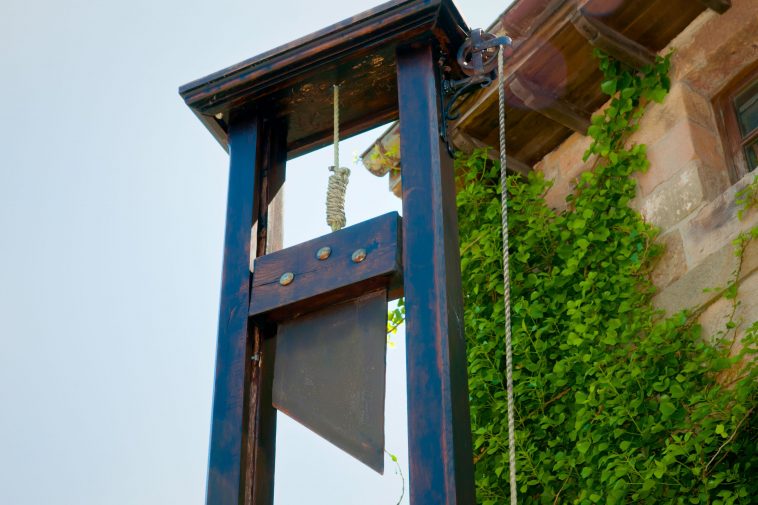Throughout history, brutal styles of torture were used on people as a means of punishment or for obtaining information and confessions. One of the most gruesome methods that still sends a shudder down the spine of anyone from the modern era is the guillotine.
The guillotine was a device that was designed to carry out executions by beheading people. It dates back to the Middle Ages and the French Revolution, although similar machines had already been in use for centuries.
The origins of the French guillotine can be traced back to 1789 when Dr. Joseph-Ignace Guillotin suggested that the French government employ a less cruel form of execution. That’s when the idea of the guillotine was born.
Dr. Guillotin was a French physician and politician. Even though the tool of torture was named after him, he was against the idea of capital punishment, which is also known as the death penalty. He believed that criminals should be able to volunteer as subjects for medical experiments instead of undergoing capital punishment.
After completing his medical studies, Guillotin became a well-known politician. In 1789, he was elected to the Estates General, a legislative and consultative assembly. He was the secretary, a position that had no real authoritative power, and acted as an advisor to the Crown.
Before Guillotin’s proposal to develop a gentler method of execution, individuals died by axe or sword. People were also hanged, burned at the stake, or boiled to death. Guillotin wanted to get rid of the death penalty altogether but could not convince the government to agree. So, he came up with the guillotine instead.
In addition, he had six principles for humane punishment: all punishments should be the same for the same type of crime, regardless of social class; the death sentence will be applied by decapitation with a machine only; the family of the guilty party will not suffer legal discrimination; harassing the guilty party’s family about their punishment will be illegal; the convicted’s property will not be confiscated; and finally, the bodies of the executed must be returned to the family if requested.
Guillotin argued that swift decapitation by a machine was more humane than sword and axe beheadings, which could often go wrong, making the process a longer one. He oversaw the creation of the first prototype. The French guillotine was likely inspired by machines from Italy’s Renaissance era and Scotland.
In April 1792, the device claimed its first victim. Much to Guillotin’s horror, it was quickly dubbed the “guillotine,” and executions by guillotine turned into major events.

Sign up for Chip Chick’s newsletter and get stories like this delivered to your inbox.


